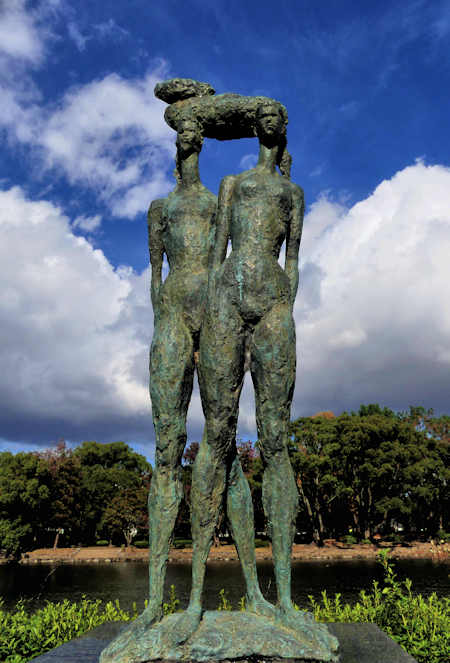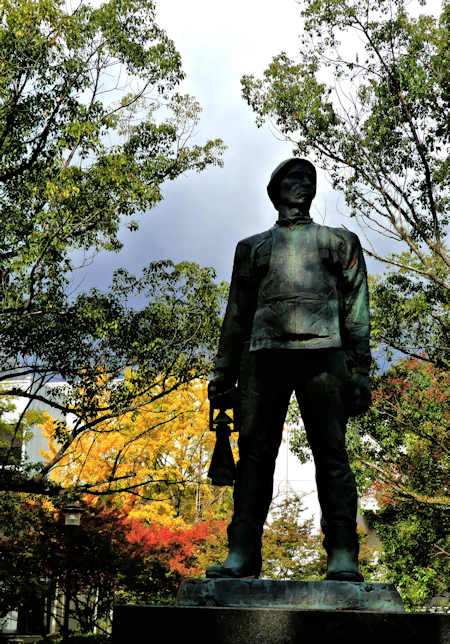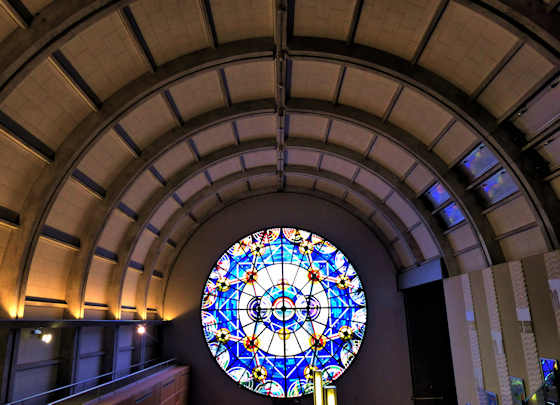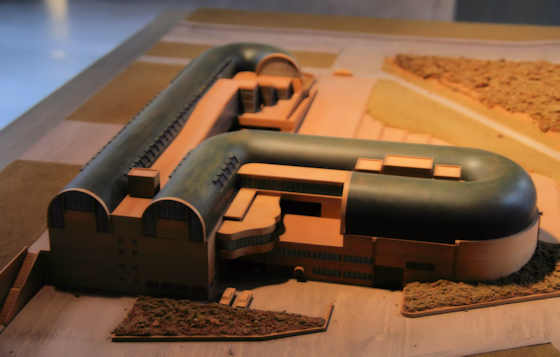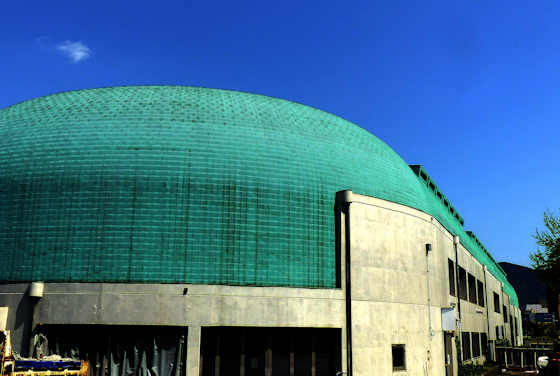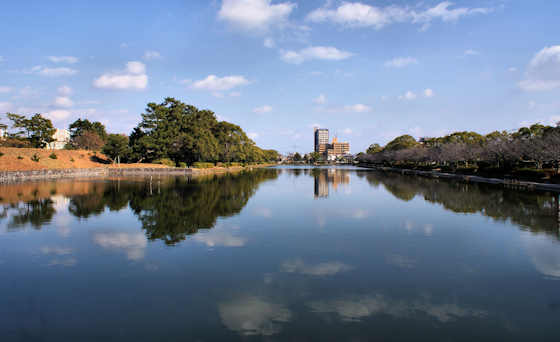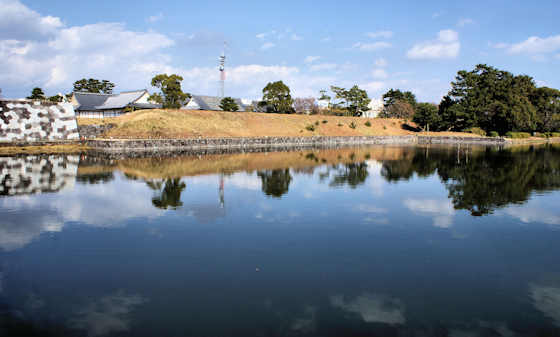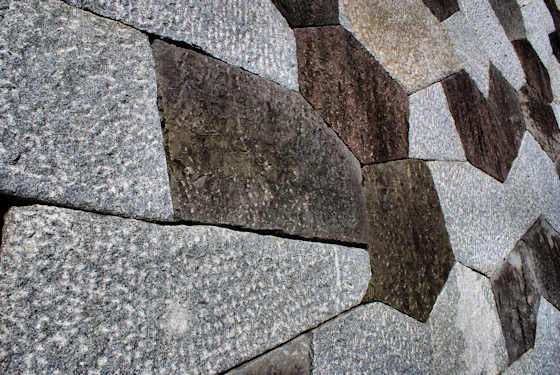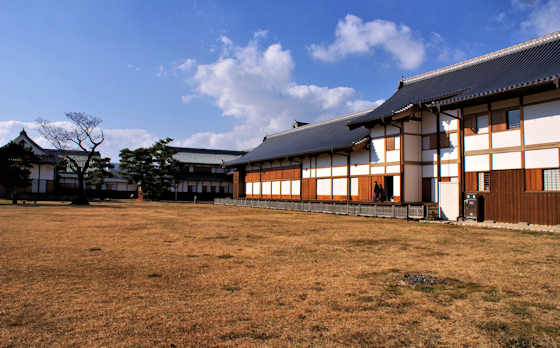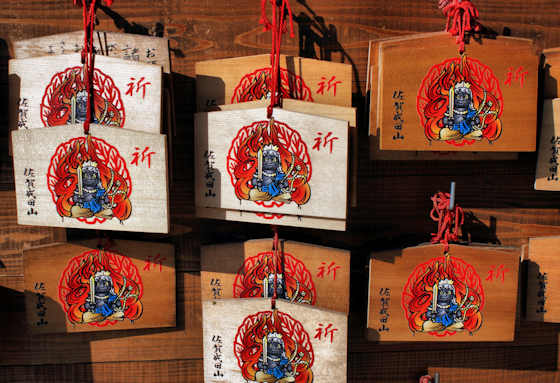Tadao Koga Sculpture Forest
Within the grounds of what was Saga Castle, adjacent to the reconstructed palace, are the Saga Prefectural Museum and the Saga Prefectural Art Museum. Between them and the moat is the Tadao Koga Sculpture Forest.
Tadao Koga (1903-1979) was a Japanese sculptor born in Saga and many of his works are on display in this outdoor exhibit. I suspect there is more of his work inside the art museum but I did not go in to find out.
The works on display are larger-than-life bronzes that reminded me of socialist art of the mid-20th century.
Other than a statue of Saigo Takemori in Kirishima, he does not seem to have produced anything of note, though he was chairman of the Japan Sculpture Society.
The top piece is Hoshin, 1960. The second is Spring Cloud, 1963, the third is Gamecock & Man, 1958. The fourth is Limit, 1965. The fifth is Grow Next Generation, 1956. The sixth is Factory Night Watchman from 1938, and the final photo is Three Fishermen from 1954.
It's a nice, free, public art space that is worth a look if you are visiting the castle.

